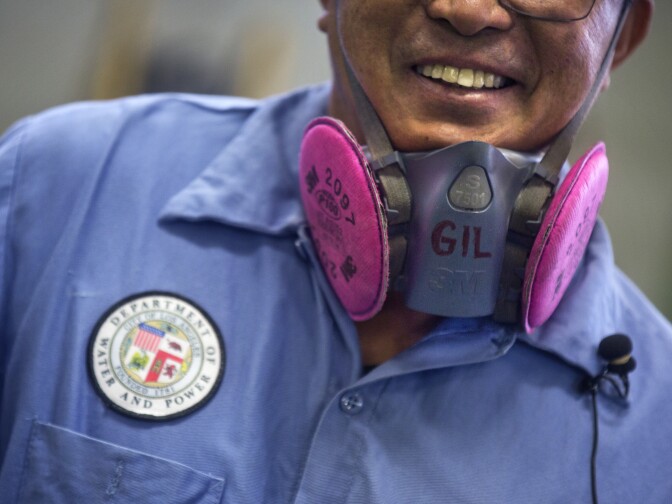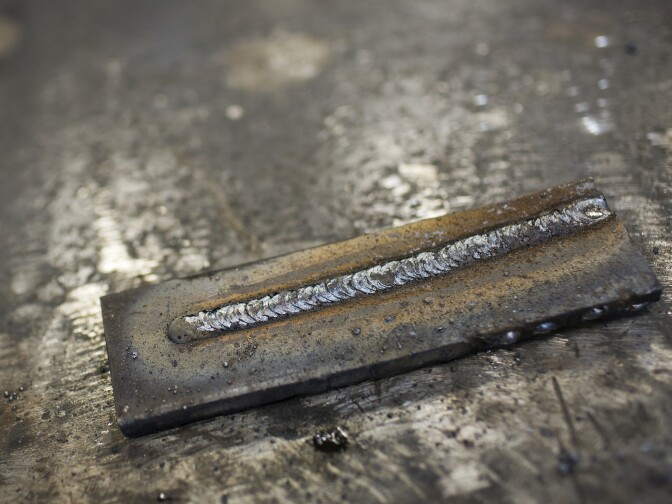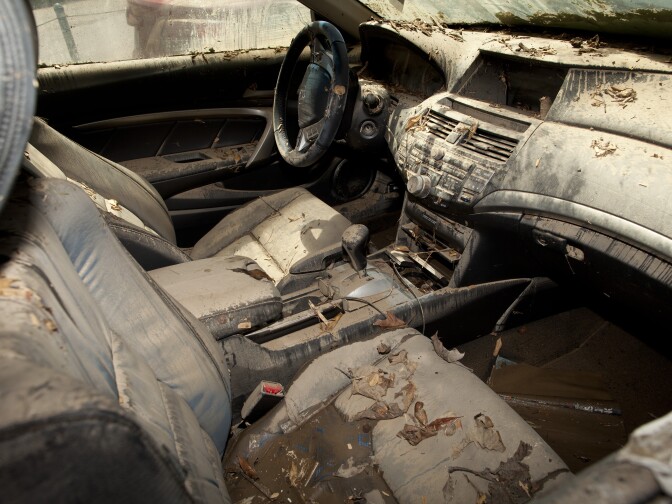Truth matters. Community matters. Your support makes both possible. LAist is one of the few places where news remains independent and free from political and corporate influence. Stand up for truth and for LAist. Make your year-end tax-deductible gift now.
This archival content was originally written for and published on KPCC.org. Keep in mind that links and images may no longer work — and references may be outdated.
UCLA flood: Welders fixed Sunset Blvd. pipe break with string, math and mud
Millions of viewers saw how a geyser fed by a broken pipe flooded UCLA last July, but few have heard how a dozen city welders used string, math, clay and white-hot metal to restore water service.
One of those welders is John Nerio. He supervises a crew of four who work out of the welding shop at the L.A. Department of Water and Power yard in North Hollywood.
He was one of a dozen welders who arrived the day after the break, as soon as enough water was cleared away so they could get close to the pipe.
"When I showed up, the water was still leaking. They were shutting off all the valves," Nerio said. "So when I get there I'm like, looking at it -- Wow -- What are we going to do here?"
What they saw was daunting. A 90-year-old main line running along Sunset Boulevard that connected to two somewhat younger pipes from the '30s and '50s in a Y-shaped angle. That joint was badly corroded, and there were signs of bad welds from its initial installation.
It was all so old -- the city had no blueprints to guide the welders about what was underground or how it should be repaired. Nerio said it was the kind of challenge he likes.
"I can look at a piece of steel like you see on that rack right there and make something out of it. So when I'm done, it'll be something," he said.
Nerio, by the way, has his own welding equipment at home, to make things just for fun. He builds sand rails -- a kind of stripped down desert dune buggy. Once, he built a dolly to help city work crews and their back hoe machines haul steel beams to shore up some crumbling slopes in the Hollywood Hills.
So fabricating a steel plate into a curved patch to perfectly fit a corroded pipe was a pretty typical task. A more complicated task was to create a new T-shaped joint to replace the corroded Y connection under Sunset Boulevard.
The fix turned out to be old school. They started out by using string to plot the existing pipe's dimensions and plan the new connector.
"After the trench was dug and the pipe was all exposed, we went inside the trench and we pulled strings," he said. "We pulled strings three, four five different ways to get the angles, the heights, the levels, everything we pull."
From those string measurements, they use other tools from basic math classes (the sort many high school kids figure they are done with after graduation) like protractors and levels to figure the angles and curves of the big T-shaped joint.
Nerio's message to school kids: "Pay attention because you'll need math. Math is important in life. It's not only just to count money."
They had their plan, so it was time to fire up the welding torches and start "stringing beads," which is welder's lingo for the seams they solder to connect metal surfaces to each other at super-hot temperatures.
There were so many ways to get hurt on a job like this. The workers were cramped in a trench amid flying sparks.
It's one thing to weld something that you're leaning over, but try welding something when you're lying underneath it, Nerio says. It's not that unusual to get bits of metal burning through a shirt, or up under a welding mask.
They are also working with electrical arcs that can damage unprotected eyes. And it is a wet environment.
"And when you get wet, water and electricity don't mix," Nerio said.
To protect against shock they wear rain coats, rubber boots, even rubber gloves under their leather work gloves.
Add in a hot summer sun, and you've got a challenging worksite.
Nerio was among a dozen welders who worked in overlapping 16-hour shifts over three days.
A particular challenge was keeping water out of the joints to be welded. The pipe sections would be butted together with metal straps, but water inside the pipe could leak through to the outside where the welders were attempting to apply the welds.
"We still had residual water coming into the pipes," Nerio said. "We were doing everything to stop that water. On that last joint, we were doing everything to stop it, we were throwing mud in there. Ultimately, what we did was shove clay in there to stop that leak."
The work lasted around the clock for three days.
"And the last day, the last piece that went in, was, it was early morning, when that piece went in, it was just applause, everybody was happy," Nerio said. "We were ecstatic. Everything fit, it fit like a glove."
They filled the pipes, and it all held -- nothing leaked. Their work was done.
" All that pretty work was buried, now you don't see it," he said.
Nerio's been welding for 35 years, the last 26 for the City of Los Angeles and the DWP.
" A lot of people in today's life think that welders are just there to string a bead or light a fire. But that's not true. You got to literally be a fabricator," he said.
You can sense the pride.
"I'm a fabricator. Yes, I make things."
















